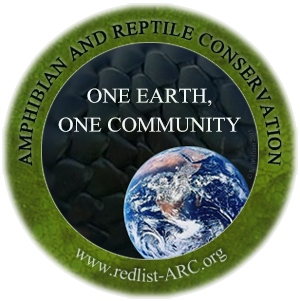|
VOLUME 9 (1) IRANIAN
PLATEAU
INTERNATIONAL CHAPTER - AMPHIBIAN
AND REPTILE CONSERVATION
NOTIFICATION: This website and its affiliates are the official Internet website portals
for the Amphibian and Reptile Conservation journal and our global conservation network. We
own all copyright, exclusive of authors copyright, produced by any proxy fraudulently presenting as
Amphibian and Reptile Conservation including the fraudulent highjacker journal
www.amphibian-reptile-conservation.org as published by the "Amphibian and Reptile Conservation
organisation" an illicit group led by Craig Hassipakis. Craig Hassipakis has a long and dismal
history of fraudulent activities, including recently committing perjury in an attack on our global
conservation network, as we document see Internet Fraud.
Here we present a review article on the
sustainable management of the herpetofauna of the Iranian Plateau. Few such articles have
been published for any biogeographical region and we hope that our efforts will inspire other
teams of authors to write similar reviews for other regions. Also see our special Mexico
Issue for other conservation re-assessments.
Neurergus newts are globally prominant in amphibian conservation and include two
Critically Endangered species Neurergus kaiseri and N. microspilotus (see issue dedicated
to Neurergus salamanders). These
species have been subject to extensive field work by the Iranian Department of the
Environment, Razi University, and other institutions that has greatly increased our knowledge
of these species. We also present new records and species for the
region.
For notification of the
publication of our articles in press "Sustainable Management of the Iranian Plateau Herpetofauna" and
"The amphibian fauna of Kurdistan Province, Western Iran." and
others please join our members list at MEMBERSHIP
For Persian abstract and more details of
the articles below see www.redlist-arcme.org/Iranian Plateau
Sustainable Management of the Iranian Plateau
Herpetofauna. 2014. Nasrullah Rastegar-Pouyani, Ali Gholamifard,
Rasoul Karamiani,Zahed Bahmani, Asghar Mobaraki, Elham Abtin, Hiwa Faizi, Nastaran Heidari, Mohsen
Takesh, Farkhondeh Sayyadi, Nabi Ahsani and Robert K Browne. Amphibian and Reptile Conservation. 9(1): 1-15 (in
press).
Summary:
Sustainable management includes the long term
protection of biodiversity. Iran is a biogeographical center for the origin of many
herpetofaunal species. Numerous factors have made a major impact on various
ecosystems including habitat destruction, exotic species, the use of reptile products in
traditional medicine and food, and pollution. A concerted Iranian and international program
for the sustainable management of Iranian herpetofauna is required because of Iran’s
biogeographic status, its high level of herpetological diversity and endemicity, and its
importance as a global biodiversity hot spot. PDF
A conservation reassessment of the Critically Endangered,
Lorestan newt Neurergus
kaiseri (Schmidt 1952) in Iran.
2014. Asghar Mobaraki, Mohsen Amiri, Rahim Alvandi, Masoud Ebrahim
Tehrani, Hossein Zarin Kia, Ali Khoshnamvand, Ali Bali, Ehsan Forozanfar, and Robert K
Browne. Amphibian and Reptile Conservation.
9(1): 16-25. PDF
Summary: The Lorestan newt
(Neurergus kaiseri, Schmidt 1952) is an endemic
salamander species to Iran, listed as “Critically Endangered” in the 2006 IUCN Red List due to
population declines of 80%, over collection for the pet trade; area of occupancy less than 10 km2,
fragmented populations, less than 1,000 adults, and continuing habitat degradation and loss. We
estimate a minimum total population of greater than ~9,000 adult N. kaiseri at the sites we
surveyed. A conservation action plan should be prepared by the Department of the Environment of
Iran, with contributions by Iranian and International experts on all facets of the conservation of
Neurergus species especially including the expansion of community conservation
programs.
First record
of Apathya cappadocica
muhtari (Eiselt, 1979) (Sauria: Lacertidae) in
Iran with its natural history and
distribution. 2014. Zahed Bahmani, Rasoul Karamiani, Nasrullah
Rastegar-Pouyani, Ahmad Gharzi. Amphibian and Reptile
Conservation. 9(1): 26-29. PDF
Summary: The first record of the
lacertid lizard Apathya cappadocica muhtari from
Iran is presented. The most distinguishing characters of A. c.
muhtari is the presence of an undivided and single preanal plate and six
longitudinal rows of ventral shields.
The amphibian fauna of
Kurdistan Province, Western Iran. 2014. Zahed Bahmani,
Rasoul Karamiani, Nasrullah Rastegar-Pouyani, Ahmad Gharzi, Robert Kenneth Browne. 2014.
Amphibian and Reptile Conservation 9(1):
31–35.
PDF
Summary: The amphibian fauna of Kurdistan Province was surveyed
over a period of three years from April 2010 to June 2013. We found six species of amphibians
belong to five genera and four families including: Rana ridibunda and Rana
camerani (family
Ranidae), Bufo viridis (family Bufonidae), Hyla
savignyi (family Hylidae), and the critically
endangered Neurergus
microspilotus and Salamandara infraimmaculta semenovi (family Salamandridae). N. microspilotus is
distributed in Kermanshah and Kurdistan Provinces, while S. i. semenovi is confined to
Kurdistan Province. These two species are threatened by anthropogenic habitat modification
particularly the loss of suitable aquatic habitat and the effects of climate
change.
Conservation status of the Kurdistan
Newt Neurergus
microspilotus in Kermanshah and Kurdistan
Provinces, Iran. Nasrullah Rastegar-Pouyani, Rezgar Mirani,
Zahed Bahmani, Rasoul Karamiani, Mohsen Takesh, and Robert K Browne. Amphibian and Reptile Conservation. 9(1):
36-41.
Low res PDF 2.9M
High res PDF 3.4M
Summary: We found 11 new localities of Kurdistan newt
Neurergus microspilotus during extensive surveys
work in western regions of the Iranian Plateau from 2012 to 2013 in Kermanshah Province and seven
in Kurdistan Province. There were few Neurergus microspilotus observed in each
habitat because of a number of threatening processes.
Sexual
dimorphism of the Yassujian lizard, Apathya yassujica
(Nilson et al, 2003) (Sauria: Lacertidae) from
Iran. 2014. Rasoul Karamiani, Sarallah Dabid, Nasrullah
Rastegar-Pouyani. Amphibian and Reptile Conservation.
9(1): PDF.
Summary: We measured the
morphometrics of 23 male and 19 female adult specimens Apathya
yassujica (Nilson et al., 2003) from Kohguiluyeh Va Boyer Ahmad and Fars Provinces
in southwestern regions of the Iranian Plateau. The uni-and multivariate analyses performed on the
morphometric data (metric and meristic) demonstrated that males are larger than females but other
morphometrics are the indistinguishable. New records of A.
yassujica from different regions of Fars province, southwestern Iran were
recorded.
COPYRIGHT
This work is licensed under a
Creative Commons
Attribution-NonCommercial-NoDerivs 3.0 Unported License.
Attribution — You must attribute the work in the manner
specified by the author or licensor (but not in any way that suggests that they endorse you or
your use of the work). Required attribution for any material on this website material must
include www.redlist-arc.org
Noncommercial —
You may not use this work for commercial purposes.
No Derivative Works — You may not
alter, transform, or build upon this work.
Second Party Archiving - Subject to authors copyright,
all material on this website including articles and other PDFs is provided by Amphibian and
Reptile Conservation for private/research use. Subject to authors copyright, deposition in
public libraries or on websites without permission is prohibited.
|




